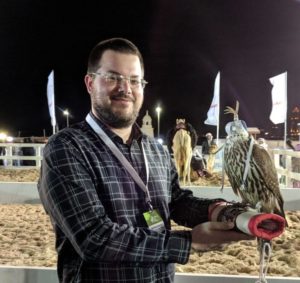
Nature Methods just published “Accurate detection of complex structural variations using single-molecule sequencing,” a publication that presents the NGMLR aligner and Sniffles structural variant caller, both designed for use with long-read sequencing data. We chatted with developer and lead author Fritz Sedlazeck from the Human Genome Sequencing Center at Baylor to learn more.
Q: Why was a new alignment tool needed when many scientists already use BWA and other methods?
A: When I started my postdoc in Mike Schatz’s lab at Cold Spring Harbor, I had the opportunity to look at the complex SK-BR-3 cell lines. We soon discovered two challenges not addressed effectively by existing aligners: mapping split reads correctly, and handling the random short insertion and deletion errors that are characteristic of long reads.
Q: Why was Sniffles needed for structural variant detection?
A: Most of the methods for structural variant detection focus on paired-end reads. There were no appropriate structural variant calling tools at the time for long-read data, and very few callers that take into account split-read alignments. You have to have a method that parses through the full read.
Q: When you applied these tools to long-read data, what could you see that wasn’t visible before?
A: Before we started to think about how we could improve the alignments and structural variant calling, we spent a lot of time looking at IGV, focusing on single reads in complex regions like oncogenes. We knew there were some events that were hidden from us, and we saw a lot of noise coming out. That really motivated us to develop these new tools to find the signal in the noise. When we first applied them, very quickly we were detecting these structural variants. Some of the first results from Sniffles were identifications of amplification events and inversions that had not been found before.
Q: You’ve talked about plans to sequence 100 people with SMRT Sequencing from PacBio. What are the goals of that study?
A: This study is aiming at the concept of comprehensive genomes, or what Richard Gibbs calls “super-genomes.” We have SNP calls from Illumina, PacBio reads to call structural variants, and for a few samples we have 10x Genomics data for really long phasing. Our best example so far is a 67 Mb phasing block N50 for SNV and SVs. This pilot study covers many different ethnicities. The majority of samples are from African Americans, and there are many samples from Hispanic individuals as well. There are just a few Caucasians. We hope to get a good ethnicity-specific structural variant call set that we can use to inform other studies as well. We are confident that we’ll be able to identify many more structural variants that are invisible to short-read data.
Q: How much long-read coverage is needed for accurate structural variant discovery in a human genome?
A: We are aiming for about 10-fold coverage, which leaves us with 5-fold per haplotype. That’s enough for good coverage of each chromosome and lets us see the vast majority of structural variants.
For more technical detail about Sniffles and NGMLR, check out our blog post covering this paper as a preprint or attend the upcoming LabRoots webinar on May 9, in which Sedlazeck will give a talk entitled “Size Matters: Accurate Detection and Phasing of Structural Variations.”